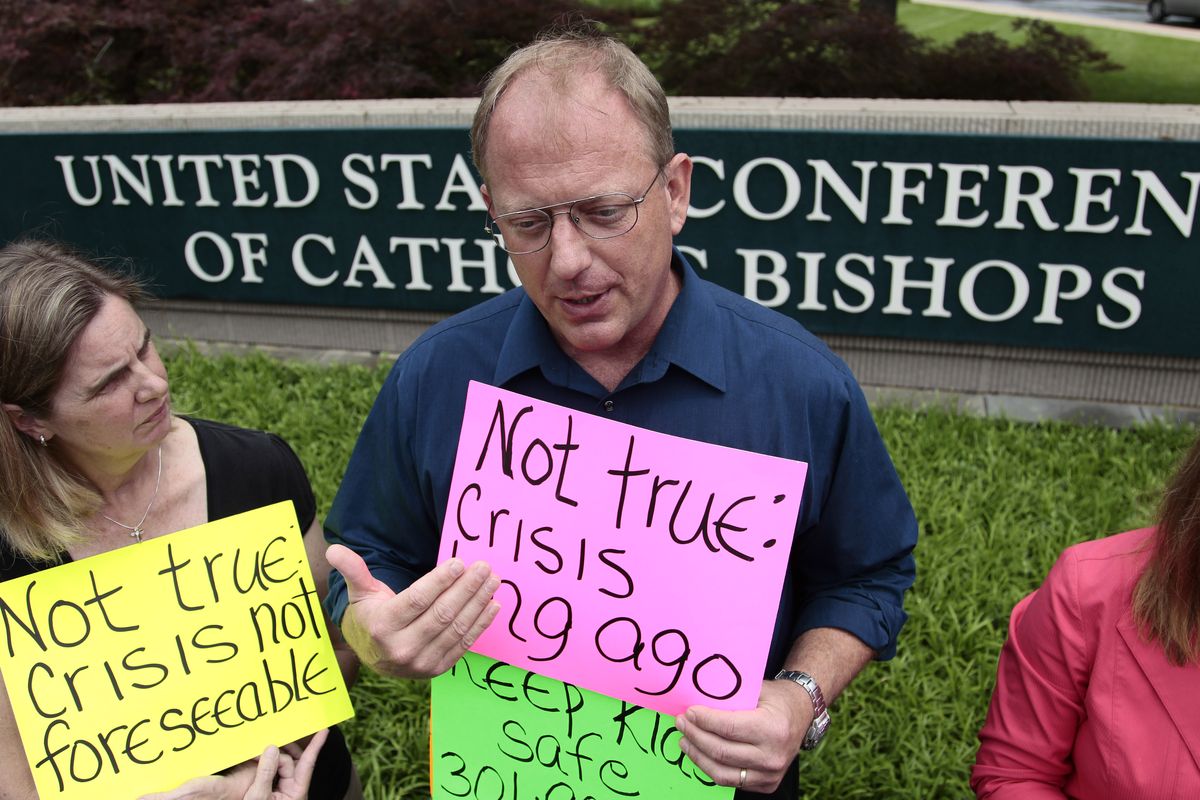Report says priest sex abuse largely past
Finds homosexuality, celibacy not to blame

LOS ANGELES – Sexual abuse by Roman Catholic priests in the United States is a “historical problem” that has largely been resolved and never had any significant correlation with either celibacy or homosexuality, according to an independent report commissioned by Catholic bishops – and subjected to fierce attack even before its release on Wednesday.
The report blamed the sexual revolution for a rise in sexual abuse by priests, saying that Catholic clerics were swept up by a tide of “deviant” behavior that became more socially acceptable in the 1960s and ’70s.
As that subsided, and as the church instituted reforms in the 1990s and 2000s, the problem of priests acting as sexual predators sharply declined, according to the study by John Jay College of Criminal Justice in New York.
“The abuse is a result of a complex interaction of factors,” said Karen Terry, a John Jay criminal justice professor who led the research team. One major factor, she said at a news conference in Washington, was social turmoil in the 1960s and ’70s that led some priests “who had some vulnerabilities” to commit child sexual abuse. She said Catholic seminaries had done a poor job of preparing priests “to live a life of chaste celibacy,” as their vows demanded.
The report found no evidence, however, that celibacy itself contributed to sexual abuse. “Given the continuous requirement of priestly celibacy over time, it is not clear why the commitment to or state of celibate chastity should be seen as a cause for the steady rise in incidence of sexual abuse between 1950 and 1980,” it said.
It also found no evidence that homosexuality was to blame. While more boys than girls have been abused, the report said, that is probably because priests had greater access to boys. In fact, it said, the incidence of sexual abuse in the priesthood began declining not long after a noticeable rise in the number of gay men entering Catholic seminaries in the 1970s.
News of the report’s findings leaked out late Tuesday with an account by Religion News Service, and reaction from critics was swift and harsh. Advocates for victims of child sexual abuse expressed outrage that the report stressed social factors, which they saw as an attempt to shift blame. A conservative Catholic group objected to the report’s exoneration of homosexuality as a cause of the abuse.
Bill Donohue, the outspoken president of the conservative Catholic League, noted on the group’s website that the report found that 81 percent of abuse victims were male and 78 percent were beyond puberty. “Since 100 percent of the abusers were male, that’s called homosexuality, not pedophilia or heterosexuality,” he said.
Anne Barrett Doyle, co-founder of the website Bishop Accountability.org, which chronicles abuse cases and acts as an advocate for victims, said the report failed to take the church hierarchy to task for the abuse crisis and seemed intended “to decriminalize the bishops’ response to child molestation.”
“But I guess what is surprising me,” she said, “is the fact that they’re also chalking up the rape and abuse of tens of thousands of children to a vulnerable priesthood responding to social turmoil.”
Speakers at the Washington news conference, held by the U.S. Conference of Catholic Bishops, insisted that church leaders did not try to shape the research and said the report did not let anyone off the hook.
“None of what is included in this report should be interpreted as making excuses for the terrible acts that occurred,” said Diane Knight, a Milwaukee social worker who chairs the bishops’ National Review Board. “There are no excuses. There is much that the church has to learn from this report and much of it is difficult. The bottom line is that the church was wrong not to put children first for all those years, all those decades.”
David Finkelhor, a sociologist who directs the Crimes Against Children Research Center at the University of New Hampshire, said he briefly reviewed the report Wednesday morning and was largely impressed by the breadth and depth of research.
However, he said. “I do think they are unfortunately going to get lambasted on some things, and it may be more of a question of tone and emphasis than actual substance.” Chief among those, he said, is the lack of emphasis on “the terrible mishandling of this whole phenomenon by the bishops and the church hierarchy.”
While critics argue that the abuse being committed today simply hasn’t been reported yet, Finkelhor said he thought that was much less likely than in the past.
“I think frankly we’re much better now at flushing out abuse early on,” he said. “I think young people feel much more comfortable coming out and talking about it.”